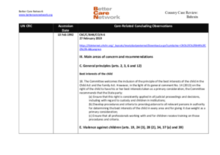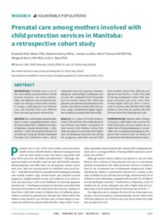Displaying 901 - 910 of 2214
This paper explores the extent to which the existing research literature has addressed four key assets to a successful transition to adulthood identified by care-experienced young people - skills and qualifications, personal connections, financial and practical support, and emotional support - and if so, what it showed about the asset’s role in a transition to adulthood.
This article is based on the author’s keynote presentation given at the Irish Foster Care Association (IFCA) conference in November 2018. It outlines an ‘ecological’ model for promoting foster care stability in Ireland.
This paper explores care leavers’ needs and priorities from the perspective of self-determination theory (SDT), which relates the individual’s motivation to the human need for competence, relatedness and autonomy.
This article presents the findings from a systematic review conducted on interventions for foster children and foster carers.
This article reports a three-stage process of developing a model of teacher education to encompass provision for Looked After Children in schools in the UK.
The present article reports findings of a narrative review of self- and carer-report mental health data that addressed the research question: Do adolescents who reside in statutory out-of-home care (OOHC) systematically underreport their mental health difficulties in population studies?
This country care review includes the care-related Concluding Observations adopted by the Committee on the Rights of the Child.
This resource compiles critical data from a variety of sources on children, youth, and families who came in contact with the US child welfare system in federal fiscal year (FY) 2017.
The objective of this study was to examine prenatal care among women with a history of having a child placed in out-of-home care, and whether their care differed from care among women who did not.
This study utilized administrative data that reviewed child welfare cases in a Midwestern state in the U.S. to examine interactions between teamwork and parent engagement associated with the permanency of children in out-of-home care.




